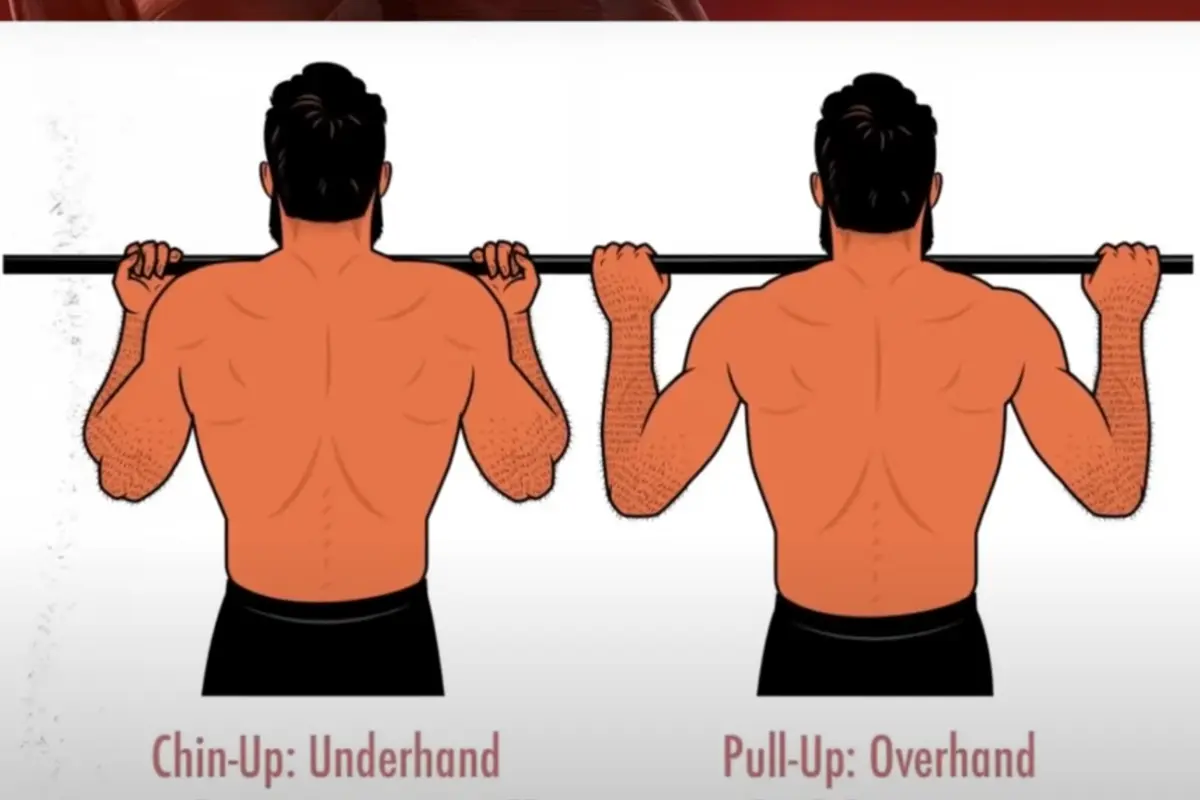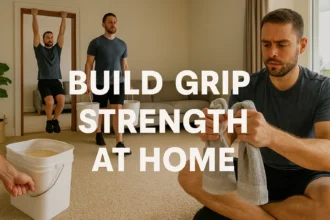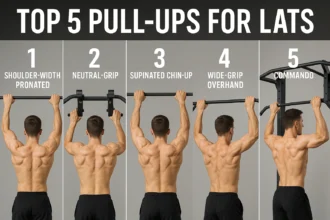Chin-ups and pull-ups are two fundamental exercises that can significantly enhance upper body strength. While they may appear similar, their differences in grip and the muscles they engage can lead to varied results in your fitness journey.
Grip Matters: The Core Difference
The primary distinction between chin-ups and pull-ups lies in the grip position. While both exercises require you to pull your body up towards a bar, the orientation of your hands impacts which muscles are activated the most.
Chin-ups
In chin-ups, you use a supinated grip, where your palms face towards you. Your hands are generally placed shoulder-width apart or slightly narrower.
This grip predominantly activates the biceps, making chin-ups a favorite exercise for anyone focused on bicep development. Additionally, chin-ups also engage your chest (pectoralis major), making it a good choice for building upper body strength overall.
Pull-ups
In contrast, pull-ups require a pronated grip, where your palms face away from you. Typically, your hands are positioned shoulder-width apart or slightly wider.
This grip shifts the focus towards your back muscles, especially the latissimus dorsi (lats). Pull-ups are ideal for those aiming to develop a wider back, as they place more emphasis on the upper back muscles.
Muscle Engagement: A Closer Look
Both exercises follow a similar movement pattern—lifting your body weight up to the bar—but the muscles engaged differ slightly due to the variation in grip.
Both exercises work a variety of muscles, including:
- Lats (latissimus dorsi)
- Biceps brachii
- Infraspinatus
- Lower trapezius
- Pectoralis major
- Teres minor
- External obliques
However, the emphasis on these muscles varies between the two exercises:
- Chin-ups: They place more emphasis on the biceps and pectoralis major (chest), as the supinated grip recruits the biceps more actively.
- Pull-ups: Pull-ups focus more on the lats and the lower trapezius, strengthening the muscles of your back.
Research on Muscle Activation
Research has highlighted the key differences in muscle activation between chin-ups and pull-ups. Studies show that during chin-ups, your biceps are activated up to 52% more than during pull-ups. This makes chin-ups particularly effective for bicep growth.
On the other hand, pull-ups activate the latissimus dorsi 14% more than chin-ups, making them a superior choice for back development.
Why Does This Matter for Muscle Growth?
When training for muscle growth, these differences become important:
Chin-ups: Because the load is more evenly shared between your lats and biceps, chin-ups tend to be easier, allowing you to perform more repetitions. This makes them ideal for building bicep strength and arm size. Additionally, chin-ups involve a greater range of motion in the elbows, which can lead to better bicep development.
Pull-ups: If you’re focusing on strengthening your lats, pull-ups are an excellent choice. They are particularly useful for targeting the back muscles and can be especially helpful if you’re dealing with stubborn or underdeveloped lats. Pull-ups are less tiring on the biceps, allowing you to focus more on the back muscles without as much assistance from the arms.
Using Angled Bars or Gymnastics Rings for Comfort
Many people find the traditional straight bar uncomfortable, especially for their elbows. An excellent way to make chin-ups and pull-ups more comfortable is to use angled bars or gymnastics rings.
These tools allow for a more natural grip and reduce strain on your elbows, making the exercises more comfortable while still providing the same benefits. The gymnastics rings, in particular, can provide additional stability and are great for improving grip strength as well.
Which Exercise is Better for You?
Ultimately, both chin-ups and pull-ups have their place in a well-rounded workout regimen. Here’s a summary to help you decide which exercise is best for you:
- Chin-ups are ideal if your focus is on building bicep strength and enhancing your chest muscles. They are also better for performing higher reps and adding extra weight due to their greater emphasis on the biceps.
- Pull-ups are the go-to exercise if you’re aiming for a wider back and more developed lats. They target the upper back more effectively and are a great addition if you want to improve back strength without overworking your arms.
| Aspect | Chin-Ups | Pull-Ups |
|---|---|---|
| Grip | Supinated (palms facing you) | Pronated (palms facing away) |
| Hand Placement | Shoulder-width or slightly narrower | Shoulder-width or slightly wider |
| Primary Focus | Biceps and upper chest | Lats and lower trapezius |
| Range of Motion | Greater elbow extension (extra 8° range) | Slightly reduced elbow range |
| Muscle Activation | Up to 52% more biceps activation | About 14% more lats activation |
| Best For | Bicep and chest development | Back and lat development |
For the best results, consider adding both exercises to your routine to achieve a well-rounded upper-body workout that builds muscle in the arms, chest, and back. Whether you’re looking to bulk up your biceps or widen your back, chin-ups and pull-ups should both be essential components of your fitness plan.






